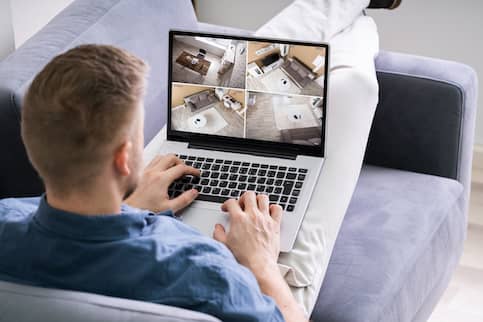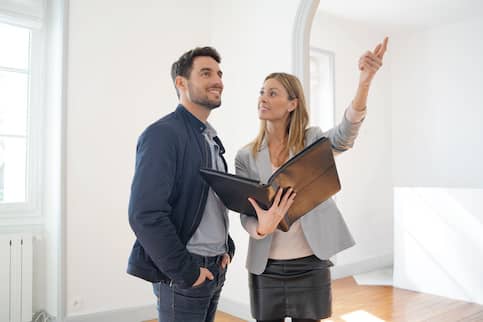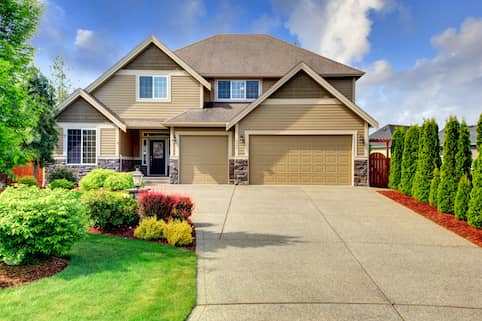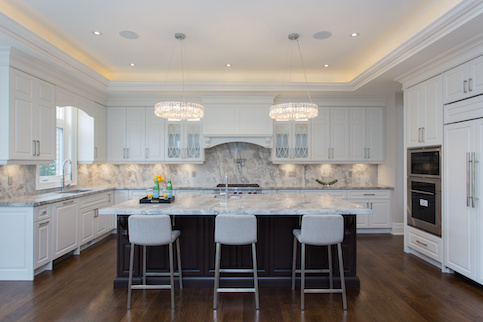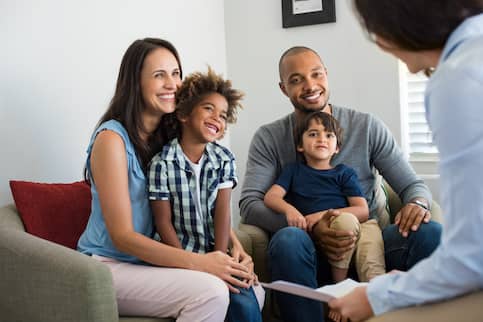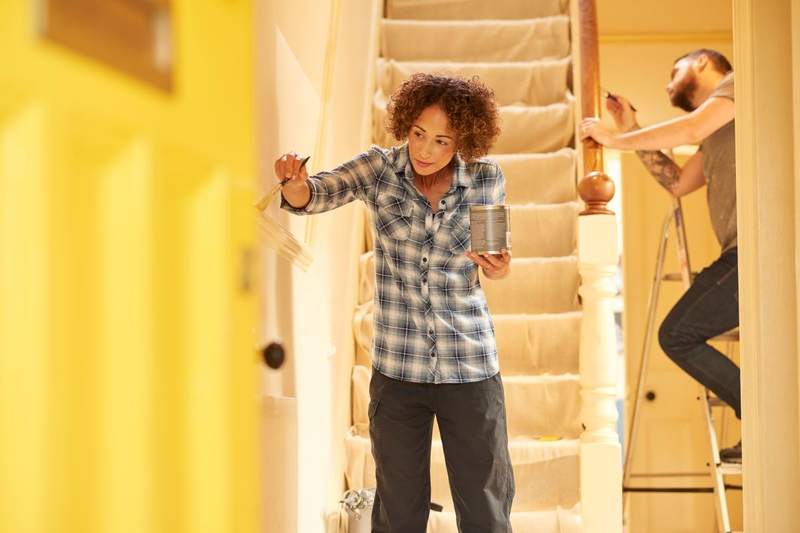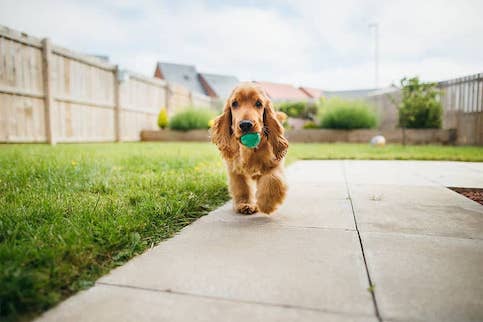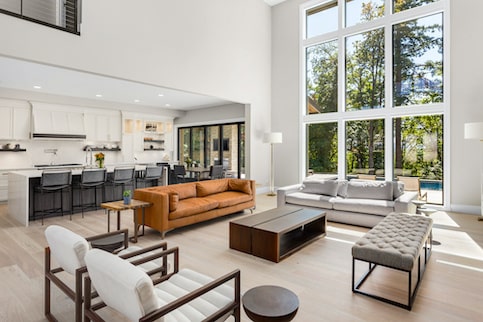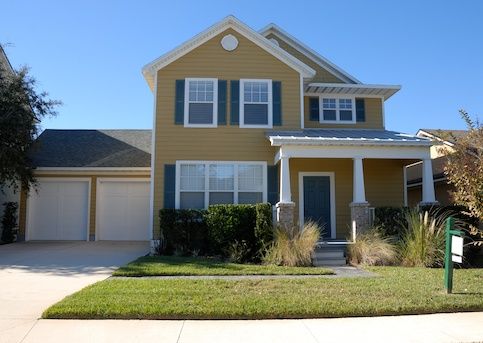A virtual tour in real estate has made showing a house for sale as easy as visiting a website – helping many people view homes from wherever they are. If you’re looking to sell your home and want to make the most of real estate’s advancing technology, a virtual house tour might be the next step for you.
You don’t have to be a professional photographer or producer to make a quality virtual tour of your house. You just need the right tools and a plan.
What Is A Virtual Tour?
A virtual tour will give you an in-depth walkthrough of the interior and mimics how a person would see the house if they were there. These can either be a video tour or a 3D photo tour, each having their own benefits depending on your home. You will often find virtual tours of houses on any real estate website that offers them. If you’re selling a home, it’s a great opportunity to document your home’s condition, selling points and features all in one place that buyers can easily access.
See What You Qualify For
Buy A Home
Discover mortgage options that fit your unique financial needs.

Refinance
Refinance your mortgage to have more money for what matters.
Tap Into Equity
Use your home’s equity and unlock cash to achieve your goals.
6 Steps To Create A Virtual House Tour
Figuring out how to do a virtual tour for your house can be confusing, especially if you’re not familiar with the process. Start by reaching out to a seller’s agent and let them know that you’d be interested in having a virtual tour for your home and ask how you should go about preparing for one. These types of real estate agents assist sellers in their home sale, so they have good insight as to what needs to be done for a virtual tour.
Whether you’ve decided to produce the tour yourself or want to hire a professional, here are some things you can do to make the process as seamless as possible:
1. Start Researching
Do some research to figure out exactly how virtual tours are made. There are multiple different ways to achieve the 360-degree look, so it’s important to consider all the options. You’ll need to figure out what kind of equipment and software to use if you’re producing it yourself. Most video editing software, like Fusion or ThingLink, have free trials or versions of their sites that you can try. If you’re looking to have someone else produce it, do your research on any companies you’re considering. Check out reviews and any samples of work they’ve done.
After some research, you can determine if you’re going to DIY this or hire a professional based on time, effort and costs.
2. Make A Plan
It’s important to make a plan before hiring someone, renting any equipment or starting to record. This way you can ensure you’re being cost and time efficient before starting.
This is where you take all your research into consideration. Decide what you’ll need on the day of recording and anything that needs to get done before then. You’ll also choose the equipment you need, decide when you should film your tour, and plan out your budget. Next, create a timeline that allows you have everything purchased or rented and set up by the filming day. Take into consideration any shipping time of equipment or time it takes to stage a house.
3. Gather Your Equipment
You’ll need a few essential supplies to get quality pictures of your home – one being a camera. In most cases, your smartphone can take pretty good photos and videos, but this might be a situation where investing in or renting a higher-quality camera is worth it. Other options are an all-in-one 360-degree camera or a DSLR camera. The DSLR, while the more expensive option, will give you higher-quality pictures for a more professional feel.
Next, you’ll want to get the correct lens. The 360 look is achievable with a normal camera lens, but it will require more pictures. For an easier process, a fisheye lens will help you capture more of the room with less work.
Finally, you’ll want to get a sturdy tripod with a panoramic head attachment. Using a tripod ensures that all your pictures are straight and taken at the same height, which is important for accuracy. The panoramic head allows you to rotate your camera 360 degrees from wherever it’s placed. This reduces the number of times you would have to reposition your camera.
See What You Qualify For
You can get a real, customizable mortgage solution based on your unique financial situation.
4. Clean And Stage Your House
Now that you have the equipment and a shoot date, it’s important to make your home look camera ready. Clean off your counters to get rid of clutter or personal belongings, vacuum or sweep, move any furniture, even paint your walls a neutral color if your budget allows. Staging is especially important for virtual tours. It helps buyers visualize the size of the space. A home that’s filled with too much clutter or decor can be distracting to the buyer and make it more difficult for them to see the big picture, especially when they aren’t standing in the room.
5. Do A Run-Through
Take the time to do one last sweep of the house, making sure that anything that will be in the photos or video has been considered carefully. This is also a good time to test your equipment to ensure that everything is working properly and is ready for the real thing.
6. Record The Virtual House Tour
Now you’re ready to start producing. Once you’ve gotten all the pictures or unedited video you need, you’ll upload your content to the editing software of your choice.
The next step is getting your completed virtual tour uploaded to some type of platform. You may need your real estate agent to post your tour on a multiple listing service (MLS), a portal for REALTORS® and agents to post listings. You could also share your video on social media and ask friends and family to share it.
Benefits Of Virtual Tours
Here are some advantages of virtual tours:
- With your home tour online, almost anyone can view it, even if they’re out of state. In turn you increase the market exposure of your listing.
- You won’t need to spend extra time setting appointments for showings or worry about scheduling your life around open houses.
Drawbacks Of Virtual Tours
Here are some disadvantages of virtual tours:
- If you’re producing the tour yourself, there are expenses that you’ll have to consider, as well as the amount of effort you have to put into it.
- Even with the option of a virtual tour, there are still going to be buyers that want an in-person showing.
The Bottom Line
A virtual tour takes a process that can usually be stressful or tedious (for both buyer and seller) and makes it into an easy, convenient and more accessible way to view you home. It also invites a wider range of potential home buyers. Depending on your situation, a virtual tour might be a great way show that your home is ready for the market.
Find out which loan option is right for you.
See rates, requirements and benefits.

Morgan Chaperon
Morgan Chaperon is a freelance writer and Michigan State University graduate. She holds a degree in English and history and enjoys reading, writing and going on walks.
